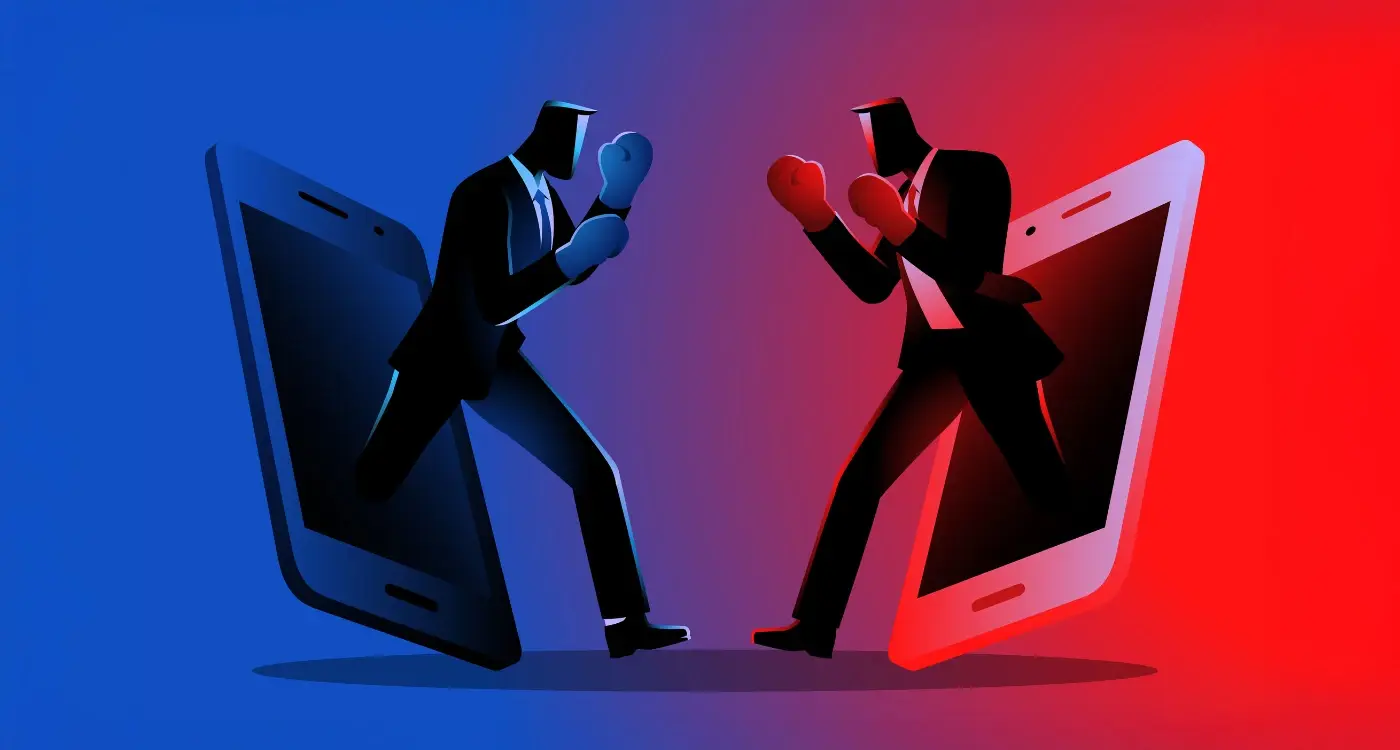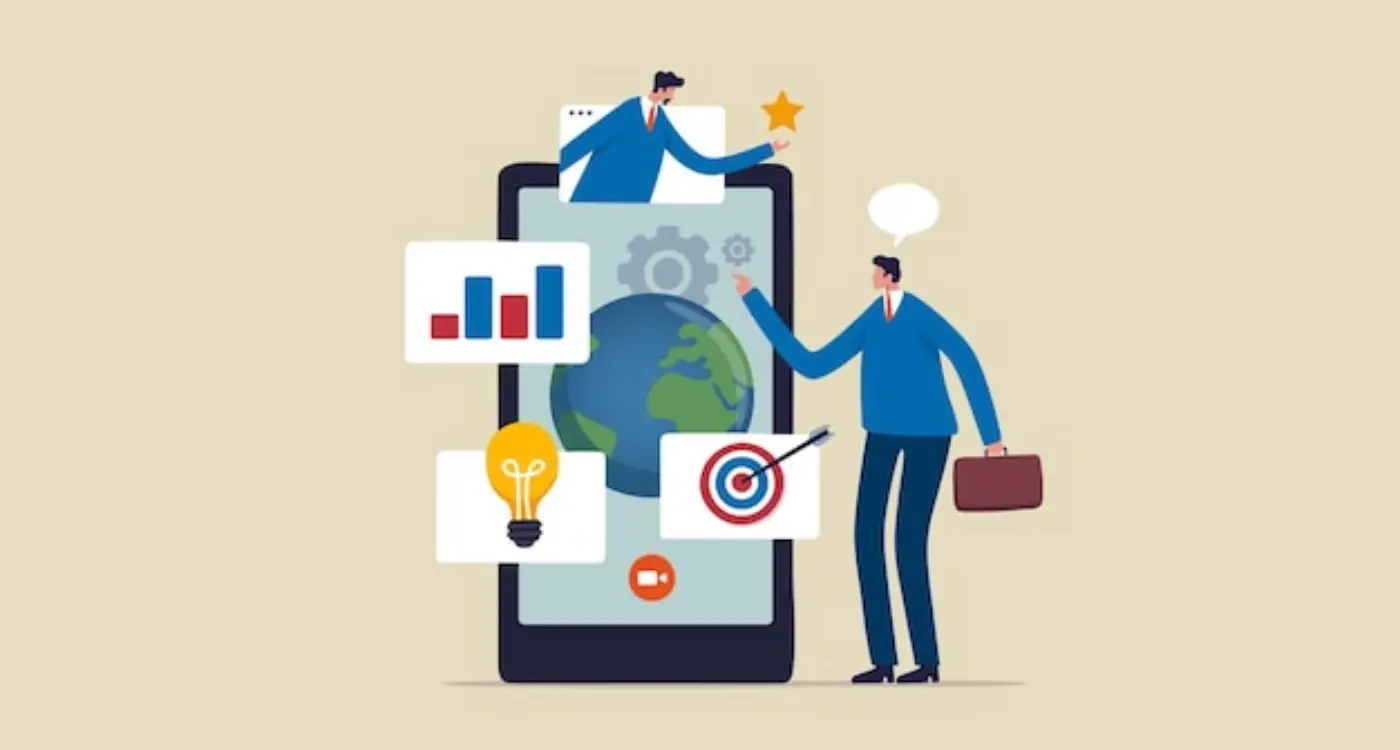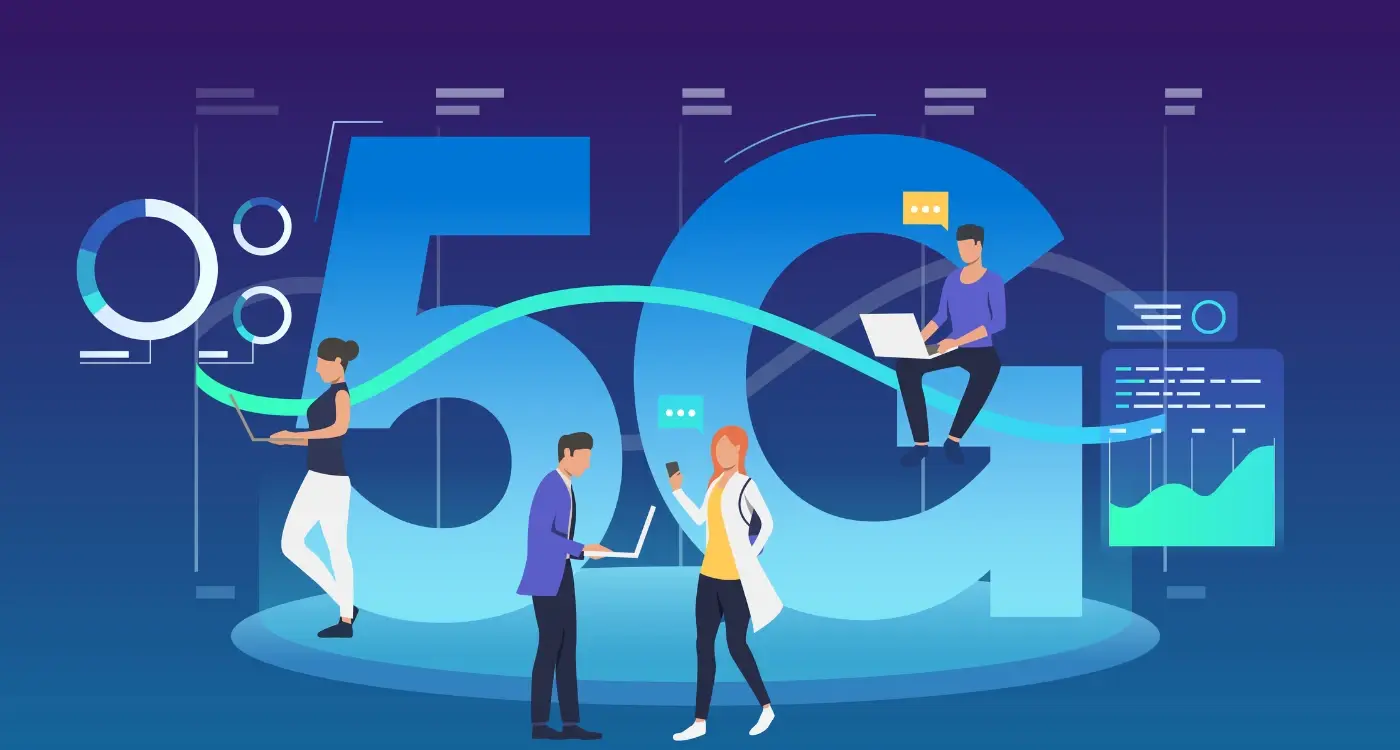How Do You Talk About Apps with Non-Tech People?
A major automotive company wanted to create an app that would let drivers check their car's health, book services, and get real-time diagnostics. Simple enough, right? But when the development team started explaining APIs, cloud integration, and OBD-II protocols to the marketing director, her eyes glazed over. She just wanted to know if customers could easily book an MOT through their phone. That disconnect between technical possibility and business reality? It happens every single day in boardrooms across the country.
I've spent years translating between two worlds—the technical reality of what apps can do and the business needs of what they should do. And honestly, it's one of the trickiest parts of my job. Not because the technical stuff is complicated (though it can be), but because we're essentially speaking different languages. When I say "user authentication," a client hears "login screen." When they say "make it pop," I need to figure out if they want animations, better colours, or something else entirely.
The biggest mistake app developers make isn't technical—it's assuming everyone thinks about mobile technology the same way they do
Here's what I've learned: successful app projects aren't just about great code or stunning design. They're about getting everyone on the same page from day one. The finance director needs to understand why certain features cost more. The marketing team needs to grasp what's technically possible within their timeline. And the CEO? They need to see how all these technical decisions connect to actual business outcomes. When stakeholder communication breaks down, projects go over budget, deadlines slip, and everyone ends up frustrated. But when you get it right—when you can translate app concepts into language that resonates with non-tech people—magic happens.
Why Non-Tech People Think Differently About Apps
After building apps for nearly a decade, I've noticed something fascinating—non-tech people approach mobile apps from a completely different angle than developers do. And honestly? Their perspective is often more valuable than ours.
When I show a client a wireframe, they're not thinking about API endpoints or database architecture. They're thinking about their customers, their business goals, and whether this thing will actually solve real problems. It's refreshing, actually.
The biggest difference I've seen is how they view complexity. Where developers might get excited about elegant code solutions, non-tech folks cut straight to the heart of it—will people use this? Does it make sense? Can my mum figure it out without instructions?
How They Evaluate App Ideas
Non-tech people tend to evaluate apps based on these criteria, in roughly this order:
- Does it solve a problem they recognise from their own experience
- How quickly can someone understand what it does
- Will it make money or save money
- Can they explain it to others easily
- Does it feel familiar or completely alien
This approach often leads to better apps, if I'm being honest. They ask questions like "why would someone download this when they could just use their web browser?" or "what happens if they lose internet connection?" These aren't technical questions, but they're bloody important ones.
The challenge comes when they assume building apps works like other industries they know. They might think adding features is like adding rooms to a house—straightforward and predictable. Or they expect app store success to work like traditional advertising. Understanding these mental models helps me communicate much more effectively with clients and stakeholders.
Speaking Their Language, Not Yours
The biggest mistake I see developers make when talking to non-tech people? Using words like "API integration" and "native functionality" then wondering why everyone looks confused. It's a bit mad really—we expect people to understand our technical jargon when they just want to know if their app idea will work.
I learned this the hard way during a client meeting where I spent twenty minutes explaining backend architecture to a restaurant owner who simply wanted customers to order food online. His eyes glazed over completely. That's when it hit me—I wasn't communicating, I was showing off my technical knowledge.
Now I translate everything into business terms. Instead of saying "we'll implement push notifications," I say "we'll send gentle reminders to bring customers back to your app." Rather than "cross-platform development," I explain "your app will work perfectly on both iPhone and Android phones." See the difference?
Focus on Outcomes, Not Methods
Non-tech people care about what the app will do for their business or users, not how we build it. When explaining app concepts, I always start with the problem we're solving and the benefit they'll see. The technical stuff comes later, if at all.
For example, instead of diving into database structures, I'll say "your customers information will be stored securely so they don't have to type their details every time they order." That makes sense to everyone.
Write down your app's main features in simple, benefit-focused language before any stakeholder meeting. Practice explaining each feature in one sentence that a ten-year-old would understand.
The key is remembering that your technical expertise isn't impressive if nobody understands what you're talking about. Clear communication builds trust—and confused clients rarely say yes to projects they don't understand.
Visual Tools That Actually Work
Right, let's talk about the tools that actually make a difference when you're trying to explain an app concept to someone who thinks "wireframe" is something you'd find in a hardware store. Over the years, I've tried pretty much everything—from fancy prototyping software to sketching on napkins during coffee meetings.
Here's what I've learned works best: simple mockups that look real but aren't overwhelming. I use tools like Figma or Sketch to create what I call "living screenshots"—basically static images that show exactly what the app will look like on someone's phone. No animations, no fancy transitions, just clean, clear screens that people can actually understand.
The Power of the User Journey Map
But here's the thing that really gets people excited: user journey maps. I create simple flowcharts that show how someone would move through the app step by step. "Sarah opens the app, taps here, sees this screen, then does that." It's like telling a story, which non-tech people absolutely love. They can finally see how all the pieces fit together.
One tool that's been a game changer? InVision or Marvel for creating clickable prototypes. Nothing beats putting a phone in someone's hands and letting them actually tap through the app—even if its just smoke and mirrors behind the scenes. When a client can physically interact with their idea, that's when the lightbulb moment happens. They stop seeing it as this mysterious technical thing and start seeing it as their product.
The key is keeping everything visual and interactive. People don't want to read technical specs; they want to see and touch their future app.
Handling the Budget Conversation
Right, let's talk about money—because this is where most app conversations either flourish or die a quick death. I've sat through countless meetings where brilliant app ideas got shelved because nobody knew how to have an honest budget conversation. The thing is, non-tech stakeholders often come to these discussions with wildly unrealistic expectations about cost.
They've heard stories about apps being built for £500 or seen basic calculator apps on the store and think that's representative of all app development. But here's what I've learned: you need to reframe the budget conversation entirely. Instead of starting with "How much do you want to spend?" start with "What does success look like for this app?"
Breaking Down Costs They Can Understand
When I explain app development costs, I use comparisons they already understand. A basic brochure app is like getting a leaflet designed and printed. A complex app with user accounts, payments, and real-time features? That's more like building a shop with a full inventory system, security, and customer service—it takes time and expertise.
The biggest mistake I see is treating app development like buying a product off the shelf, when it's actually more like commissioning a custom solution for your specific business needs
I always break costs into three buckets: building it, launching it, and keeping it running. Most stakeholders forget about ongoing costs completely. They think once the app is "done" that's it. But apps need updates, bug fixes, and server costs—just like a website needs hosting and maintenance. Being upfront about these ongoing expenses prevents nasty surprises later and helps them plan properly for their app's entire lifecycle.
This is probably the trickiest part of any client conversation. You want to be honest about what's possible without completely crushing someone's brilliant idea. I mean, nobody wants to be the person who kills dreams, right?
The key is setting realistic timelines and budgets upfront—but doing it in a way that keeps people excited about their project. When someone says "we need this built in six weeks for £5,000" I don't immediately say "absolutely not." Instead, I ask them what's driving that timeline. Is there a specific launch date? A trade show? Sometimes there's flexibility they haven't considered.
I've found its helpful to break projects into phases. You know what? People respond really well when you say "here's what we can achieve in your timeframe and budget, and here's how we can expand from there." It gives them something tangible to work with whilst keeping the bigger vision alive.
One thing I always explain is why certain features take longer than they think. Push notifications aren't just a tick box—there's server setup, user permissions, content management systems. But I explain it simply: "Getting messages to your users involves quite a bit of behind-the-scenes work, but it's what makes the difference between a basic app and one that keeps people engaged."
The biggest mistake I see other developers make? Being too technical in their explanations. When you start talking about APIs and databases, people's eyes glaze over. Instead, focus on what it means for their business. Will this feature help them make more money? Save time? Keep customers happier? That's what they actually care about.
Sometimes you do have to deliver tough news. But frame it around success: "To make this app really work for your users, we need to get these core features right first."
Common Misconceptions and How to Fix Them
Right, lets tackle the big ones. Over the years I've heard some proper crackers when it comes to what people think apps can do—and more importantly, what they think apps should cost and how long they take to build.
The biggest misconception? "It's just like a website but on a phone." Bloody hell, if I had a pound for every time I've heard that one! Apps are fundamentally different beasts. They need to work offline, handle different screen sizes, integrate with device features like cameras and GPS, and follow completely different design patterns. When someone says this to me, I explain it like this: apps live on your phone, websites live on the internet. Apps can do things even when you're not connected; they can send you notifications, use your camera instantly, and remember exactly where you left off.
Another classic: "Can't we just copy what [insert successful app] does?" Sure, you can copy features, but you can't copy the years of user research, the specific problems they solved, or their particular audience. I always ask: what problem are YOU solving that's different?
Then there's the time and money thing. "My nephew built an app in a weekend" usually means they built a very basic prototype that crashes when more than three people use it. Real apps need proper backend systems, security, testing, app store approval processes... the list goes on.
When someone mentions a "simple" app, ask them to show you exactly what they mean on their phone. Walking through real examples kills most misconceptions instantly.
The key to fixing these misconceptions isn't being condescending—it's showing, not telling. Pull out your phone, demonstrate the difference between native app features and mobile websites, and suddenly everything clicks into place.
Getting Buy-In from Decision Makers
Getting decision makers to say yes to your app project isn't about having the best technical solution—it's about showing them how that solution fits into their bigger picture. I mean, these people are juggling budgets, timelines, and probably ten other projects that all seem more urgent than yours.
The secret? Make it about them, not about you. When I'm presenting to executives or department heads, I never start with features or technical specs. I start with their pain points. What keeps them up at night? What metrics are they being judged on? How does this app make their job easier or their department look better?
The Three Things Decision Makers Actually Care About
- Return on investment: Will this make money or save money? Be specific with numbers, even if they're estimates
- Risk management: What could go wrong and how are you planning to prevent it? They need to know you've thought this through
- Timeline clarity: When will they see results? Break it down into phases so they can track progress
Here's something that works every time—show them what happens if they don't act. Not in a scary way, but realistically. "If we wait another six months, our competitors will have launched their solution and we'll be playing catch-up instead of leading the market." Decision makers hate being left behind more than they hate spending money.
And honestly? Sometimes the best way to get buy-in is to start small. Propose a pilot project or a minimum viable version that proves the concept without breaking the bank. Once they see results, getting approval for the full project becomes much easier. It's like giving them a taste before asking them to buy the whole meal.
Conclusion
After years of translating complex app concepts into language that actually makes sense to non-tech stakeholders, I can tell you this much—it's not about dumbing things down. It's about being smart enough to communicate clearly. The best developers I know aren't the ones who use the fanciest jargon; they're the ones who can explain why something matters in terms their audience actually cares about.
Here's what I've learned works every single time: focus on outcomes, not features. Instead of talking about "API integrations" talk about how different systems will work together to save time. Don't explain "responsive design"—show them how their app will look great on any device their customers use. Its really that simple, but it takes practice to get right.
The visual tools we've covered—mockups, user journey maps, simple flowcharts—these aren't just nice-to-haves. They're your secret weapon for getting everyone on the same page before you start building. I've seen too many projects go sideways because someone assumed the client understood what they were getting. Assumptions kill projects.
And honestly? Getting better at stakeholder communication makes you a better developer. When you have to explain why certain technical decisions matter for the business, you start thinking more strategically about everything you build. You stop building features that sound clever and start building things that actually solve problems.
The budget conversations, the expectation management, handling those "can we just add one more thing" moments—these skills will serve you well beyond app development. Every successful project starts with clear communication, and that's something you can get better at with every conversation you have.
Share this
Subscribe To Our Learning Centre
You May Also Like
These Related Guides

How Do You Identify Emerging Tech Before Your Competitors?

How Should B2B Apps Position Differently Than Consumer Apps?



